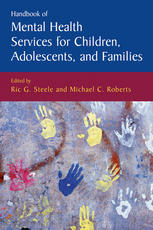

Most ebook files are in PDF format, so you can easily read them using various software such as Foxit Reader or directly on the Google Chrome browser.
Some ebook files are released by publishers in other formats such as .awz, .mobi, .epub, .fb2, etc. You may need to install specific software to read these formats on mobile/PC, such as Calibre.
Please read the tutorial at this link: https://ebookbell.com/faq
We offer FREE conversion to the popular formats you request; however, this may take some time. Therefore, right after payment, please email us, and we will try to provide the service as quickly as possible.
For some exceptional file formats or broken links (if any), please refrain from opening any disputes. Instead, email us first, and we will try to assist within a maximum of 6 hours.
EbookBell Team

4.7
56 reviewsSocial, economic, and theoretical changes in the current clinical landscape are adding up to profound changes in children’s services--not the least of which is an expanded need for mental health services. Professionals--novices and veteran clinicians alike--wonder how to fill this demand in the present climate of turf wars, reorganizations, and budget cuts. The Handbook of Mental Health Services for Children, Adolescents, and Families cogently analyzes the issues and provides the answers, from current issues and emerging therapeutic trends to new avenues of treatment. Thoroughly researches and documented buy industry experts, it presents the widest range of mental health services available to youth and their families.
Areas of coverage include:
Specific modalities in service delivery, including in-patient and day treatment facilities, pediatric hospitals, and community mental health centers as well as rural, school, and primary care settings.
Services tailored to special populations, such as adolescent sex offenders, homeless children and their families, children with chronic illness, oppositional teens, abuse situations, and children exposed to traumatic events.
Details on preventative programs for child abuse, substance abuse, STD’s, and gang violence.
An in-depth examination of the latest developments in children’s services, including therapeutic camping and Internet-based treatment.
Approaches and methods for evaluating service organization, delivery, and efficacy.
Few areas of mental health care demonstrate the need for complementary services as much as child and family practice does. With this need firmly in mind, the Handbook encourages creativity and collaboration within practice settings and across agencies. For clinicians, administrators, school practitioners, and advanced-level students, this is a reference certain to have lasting impact on the field.